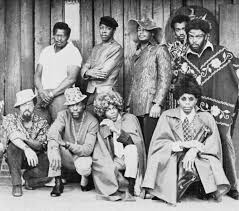Stamp: Hungarian Stamps from 1917 overprinted (Czechoslovakia 1919)
Hungarian Stamps from 1917 overprinted (Czechoslovakia 1919)
12 December (Czechoslovakia ) within release Hungarian Stamps - overprint goes into circulation Stamp Hungarian Stamps from 1917 overprinted face value 5 Hungarian korona
| Stamp Hungarian Stamps from 1917 overprinted in catalogues | |
|---|---|
| POFIS: | POF: CS 117Pp |
Stamp is horizontal format.
Inverted Overprint on Mi:HU 206 Stamp were sold only at the philatelic counter post office Praha 1, Jindrisska street.Also in the issue Hungarian Stamps - overprint:
- Stamp - Hungarian Stamps from 1919 overprinted face value 10;
- Stamp - Hungarian Stamps from 1919 overprinted face value 20;
- Stamp - Hungarian Newspaper Stamps from 1908-1913 overprinted face value 2;
- Stamp - Hungarian Stamps from 1917 overprinted face value 5;
Stamp Hungarian Stamps from 1917 overprinted it reflects the thematic directions:
A building or edifice is a structure with a roof and walls standing more or less permanently in one place, such as a house or factory. Buildings come in a variety of sizes, shapes and functions, and have been adapted throughout history for a wide number of factors, from building materials available, to weather conditions, to land prices, ground conditions, specific uses and aesthetic reasons. Buildings serve several needs of society – primarily as shelter from weather, security, living space, privacy, to store belongings, and to comfortably live and work. A building as a shelter represents a physical division of the human habitat (a place of comfort and safety) and the outside (a place that at times may be harsh and harmful).
In modern politics, and history, a parliament is a legislative body of government. Generally, a modern parliament has three functions: representing the electorate, making laws, and overseeing the government via hearings and inquiries. The term is similar to the idea of a senate, synod or congress and is commonly used in countries that are current or former monarchies. Some contexts restrict the use of the word parliament to parliamentary systems, although it is also used to describe the legislature in some presidential systems (e.g., the Parliament of Ghana), even where it is not in the official name.
A river is a natural freshwater stream that flows on land or inside caves towards another body of water at a lower elevation, such as an ocean, lake, or another river. A river may run dry before reaching the end of its course if it runs out of water, or only flow during certain seasons. Rivers are regulated by the water cycle, the processes by which water moves around the Earth. Water first enters rivers through precipitation, whether from rainfall, the runoff of water down a slope, the melting of glaciers or snow, or seepage from aquifers beneath the surface of the Earth.



